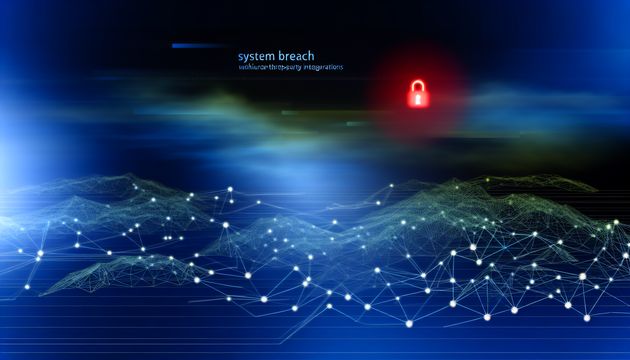
Unpacking the MathWorks Ransomware Attack: Lessons and Implications
The ransomware attack on MathWorks, a pivotal player in the scientific and industrial software sector, has sent ripples through the cybersecurity community. This breach, which began with unauthorized access on April 17, 2025, and was discovered a month later, underscores the vulnerabilities inherent in enterprise tools like MATLAB and Simulink (Bleeping Computer). The attackers managed to infiltrate critical IT systems, causing significant disruptions and exposing sensitive data of over 10,000 individuals (Daily Security Review). This incident not only highlights the sophistication of modern ransomware campaigns but also the critical need for robust cybersecurity measures in protecting digital infrastructures (CyberMaterial).
The Anatomy of the MathWorks Ransomware Attack
Timeline of the Attack
The ransomware attack on MathWorks began with unauthorized access to the company’s systems on April 17, 2025. The breach remained undetected until May 18, 2025, when MathWorks discovered the intrusion (Bleeping Computer). During this period, the attackers were able to infiltrate and compromise several critical IT systems, leading to significant disruptions in MathWorks’ operations. The attack was publicly confirmed by MathWorks on May 27, 2025, after a week of widespread service outages (The Register).
Impact on IT Infrastructure
The ransomware attack had a profound impact on MathWorks’ IT infrastructure. Both customer-facing and internal systems were affected, causing widespread outages across multiple online applications and internal systems (Cybersecurity News). The attack targeted critical IT infrastructure, resulting in several online applications becoming unavailable. MathWorks’ flagship products, MATLAB and Simulink, which serve over five million customers globally, were particularly affected, leading to significant operational challenges for users (CyberMaterial).
Data Compromise and Breach Details
The ransomware attack not only disrupted MathWorks’ operations but also resulted in a significant data breach. The attackers stole the personal information of 10,476 individuals, including names, addresses, dates of birth, Social Security Numbers, and other identification numbers (Daily Security Review). The breach affected both current and former employees, as well as customers, highlighting the extensive reach of the compromise (Claim Depot).
Response and Mitigation Efforts
In response to the attack, MathWorks immediately notified federal law enforcement and engaged cybersecurity experts to assist in the recovery efforts (Dark Reading). By May 27, 2025, many services had been restored, although some remained degraded or offline (CyberMaterial). MathWorks implemented several proactive measures to enhance security, including mandatory multi-factor authentication for all customer accounts and the integration of AI-driven anomaly detection modules into their DevOps pipelines (CyberPress).
Long-term Implications and Industry Impact
The MathWorks ransomware attack underscores the growing sophistication of ransomware campaigns targeting scientific and industrial software ecosystems. With MATLAB serving as critical infrastructure for innovation across sectors, the breach highlights the vulnerabilities inherent in enterprise tools and platforms (CyberSecure Fox). The attack has set precedents for incident transparency and cross-agency collaboration in mitigating cyber threats to computational platforms. MathWorks’ response, including rapid forensic engagement, regulatory notification, and customer outreach, aligns with common post-incident measures and serves as a case study for future cybersecurity incidents (Bleeping Computer).
Final Thoughts
The MathWorks ransomware attack serves as a stark reminder of the evolving threats facing digital infrastructures today. With the breach affecting both operations and personal data, it emphasizes the importance of proactive cybersecurity strategies. MathWorks’ response, involving rapid forensic analysis and enhanced security measures, sets a precedent for handling such incidents (Dark Reading). As industries increasingly rely on digital tools, the need for cross-agency collaboration and transparency in incident response becomes ever more critical (CyberSecure Fox). This case study not only highlights the immediate impacts of ransomware but also the long-term implications for cybersecurity practices across sectors.
References
- Bleeping Computer. (2025). MATLAB dev says ransomware gang stole data of over 10,000 people. https://www.bleepingcomputer.com/news/security/matlab-dev-says-ransomware-gang-stole-data-of-over-10-000-people/
- The Register. (2025). MathWorks ransomware attack leaves on-deadline. https://www.theregister.com/2025/05/27/mathworks_ransomware_attack_leaves_ondeadline/
- Cybersecurity News. (2025). MATLAB ransomware attack. https://cybersecuritynews.com/matlab-ransomware-attack/
- CyberMaterial. (2025). MathWorks crippled by ransomware attack. https://cybermaterial.com/mathworks-crippled-by-ransomware-attack/
- Daily Security Review. (2025). MathWorks data breach exposes 10,000 users in a ransomware attack. https://dailysecurityreview.com/cyber-security/mathworks-data-breach-exposes-10000-users-in-a-ransomware-attack/
- Claim Depot. (2025). MathWorks 2025 data breach. https://www.claimdepot.com/data-breach/mathworks-2025
- Dark Reading. (2025). MathWorks confirms ransomware attack. https://www.darkreading.com/vulnerabilities-threats/mathworks-confirms-ransomware-attack
- CyberPress. (2025). MATLAB hit by ransomware attack. https://cyberpress.org/matlab-hit-by-ransomware-attack/
- CyberSecure Fox. (2025). MathWorks ransomware attack service disruption analysis. https://cybersecurefox.com/en/mathworks-ransomware-attack-service-disruption-analysis/



